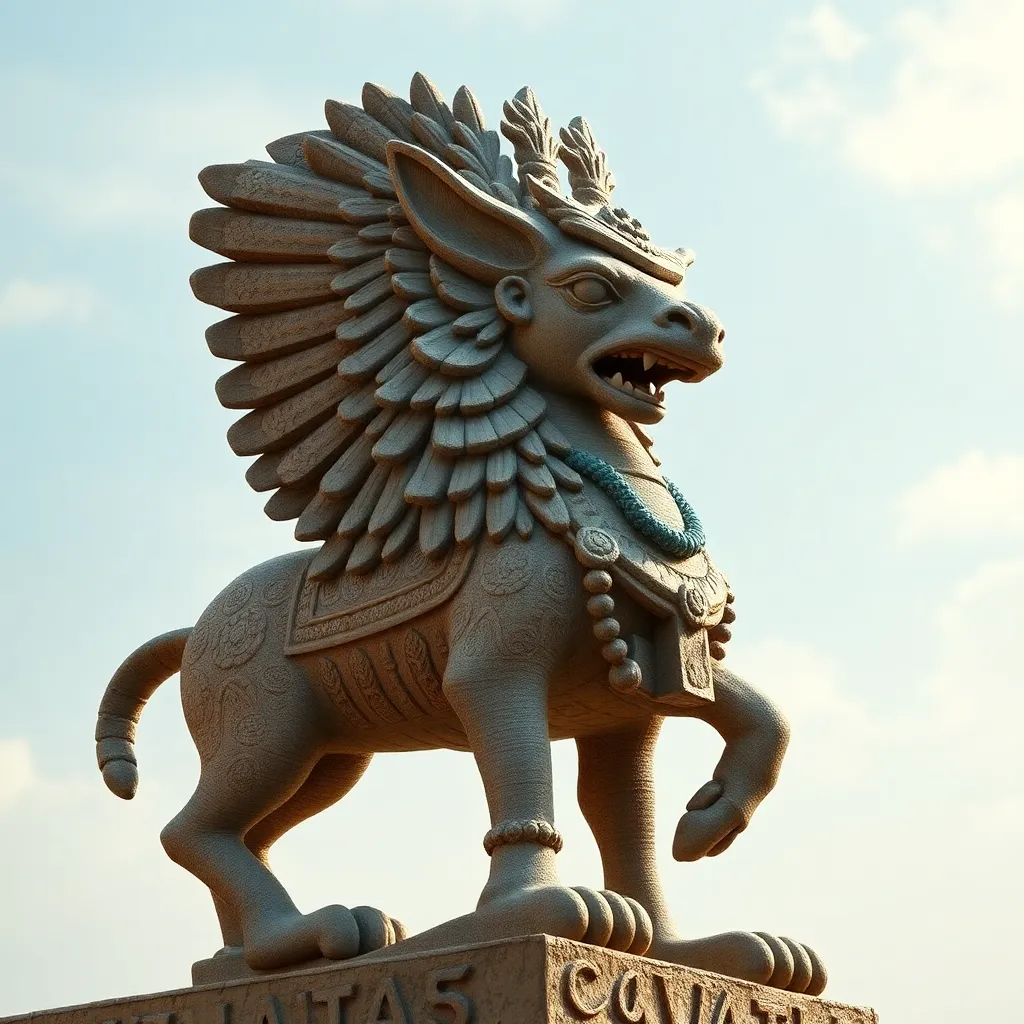The Lamassu in the Achaemenid Empire: Exploring its Influence in Persian Art
I. Introduction
The Lamassu is a mythical creature that has captivated historians and art enthusiasts alike for centuries. It is represented as a winged bull or lion with a human head, symbolizing strength and protection. In the context of the Achaemenid Empire, the Lamassu held significant cultural and religious importance.
The Achaemenid Empire, one of the largest empires in ancient history, spanned from the Balkans to the Indus Valley. It was a melting pot of cultures, traditions, and artistic expressions. This article aims to explore the relevance and influence of the Lamassu within the Achaemenid Empire, delving into its historical context, artistic techniques, and lasting legacy.
II. Historical Background of the Achaemenid Empire
The Achaemenid dynasty, founded by Cyrus the Great in the mid-6th century BCE, marked the rise of an empire that became a beacon of cultural and political innovation. Notable rulers such as Darius I and Xerxes I expanded the empire’s boundaries, fostering a rich tapestry of multicultural influences.
- Cyrus the Great: Known for his progressive policies and the establishment of the Persian Empire.
- Darius I: Expanded the empire and initiated significant architectural projects.
- Xerxes I: Continued his predecessors’ work and is often remembered for his campaigns against Greece.
Art and architecture played a crucial role in Achaemenid society. The empire’s leaders used artistic endeavors not only to showcase their power but also to convey messages of unity and strength among diverse peoples.
III. The Lamassu: Description and Symbolism
The Lamassu is characterized by its impressive physical features that combine elements of different animals and humans. Typically depicted with the body of a bull or lion, the wings of an eagle, and a human head, the Lamassu stands as a powerful guardian figure.
In ancient mythology, the Lamassu served various symbolic functions:
- Protection: Represented as divine guardians of cities and palaces.
- Royal power: Embodied the strength and dominion of the king.
- Spiritual significance: Linked to various deities, reinforcing the connection between the divine and the earthly realm.
Functionally, the Lamassu served as sentinels at the entrances of important structures, warding off evil spirits and providing protection to the inhabitants.
IV. Architectural Context of the Lamassu
Lamassu sculptures are predominantly found at significant architectural sites throughout the Achaemenid Empire, such as the palaces of Persepolis and Susa. These magnificent structures often featured grand gateways adorned with Lamassu, emphasizing their role as protectors.
The significance of gateways in Achaemenid architecture is profound:
- Gateways symbolized transitions between different realms—secular and sacred.
- They served as a demonstration of the empire’s wealth and artistic prowess.
The relationship between the Lamassu and other architectural elements is also notable. The presence of the Lamassu often complemented the intricate reliefs and inscriptions, creating a cohesive narrative that celebrated the empire’s achievements.
V. Artistic Techniques and Materials
Achaemenid artisans employed various materials and techniques in the creation of Lamassu sculptures. Commonly used materials included:
- Limestone: A prevalent choice for its durability and workability.
- Alabaster: Used for its fine texture and ability to take on intricate details.
Artisans utilized advanced techniques such as:
- Carving: Skilled sculptors carved Lamassu from solid stone blocks, allowing for intricate detailing.
- Polishing: Surfaces were often polished to enhance visual appeal.
When compared to other artistic styles of the period, Achaemenid art, particularly in the context of the Lamassu, exhibited a unique blend of local traditions and influences from neighboring cultures, resulting in an innovative artistic identity.
VI. Influence on Persian Art and Culture
The impact of the Lamassu on subsequent Persian art forms is significant. Its imagery persisted through the centuries, influencing various artistic movements and styles, including:
- Islamic Art: The motif of protective figures can be seen in later Islamic architecture and art.
- Persian Miniatures: Artists incorporated elements of the Lamassu in their paintings, symbolizing strength and protection.
Adaptations and reinterpretations of the Lamassu are evident in later periods, showcasing its enduring relevance in Persian culture. The Lamassu’s legacy continues to resonate in modern Persian culture, often symbolizing national pride and historical continuity.
VII. Comparative Analysis with Other Cultures
When comparing the Lamassu with protective figures in other ancient cultures, notable similarities and differences emerge. For instance:
- Assyrian Lamassu: Similar in form but often depicted in more aggressive postures.
- Babylonian Figures: Represented deities in less anthropomorphic forms, focusing more on symbolic representation.
The influence of the Lamassu extended beyond Persia, leaving an imprint on neighboring civilizations such as the Greeks and Romans, who adapted the motif into their own artistic traditions.
Globally, the Lamassu motif holds significance as a symbol of protection and strength, resonating with various cultures throughout history.
VIII. Conclusion
In summary, the Lamassu stands as an essential element of Achaemenid art, embodying themes of protection, strength, and cultural identity. Its enduring legacy continues to inspire artists and historians, reflecting the rich tapestry of Persian heritage.
Further research into the Lamassu can unveil more about its significance in different periods and cultures, offering deeper insights into its role as a protector and symbol of power throughout history.



